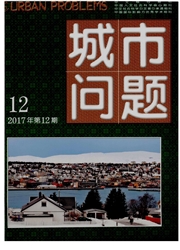

 中文摘要:
中文摘要:
网络消费发展为区域经济增长带动新的动力,对网络消费的时空演变和区域联系特征研究,有助于深入的理解网络消费市场的空间组织关系。采用京东商城网上购物评论的用户信息数据,来研究网络消费时空演变趋势及网络消费区域联系特征。选取网络消费数量、万人网络消费人数、变异系数、Theil指数等指标,分析网络消费的发展过程和区域差异,结果表明网络消费增长早期较为缓慢,从2007年开始进入加速阶段,网络消费增长呈现东部高、中西部低的特征,并且东中西三大地带内发展差异显著。通过空间联系强度分析发现,中西部地区网络消费空间联系强度低于东部地区,但区域空间联系网络由不均衡逐渐向均衡状态转变。同时,研究表明网上零售企业的物流配送等要素布局对网络消费的区域联系具有显著影响。
 英文摘要:
英文摘要:
With the development of Internet and information technologies, the e-commerce economics has raised sharply in China, which drives online consumption increasing rapidly. Online consumption gradually becomes the new growth force of regional economics. Regarding the backgrounds supporting the economic and social development are not same in different regions, so the developments of online consumption are different with different regions. The online shopping consumer of Jingdong mall is taken as example in this article, to research its tempo-spatial evolution tendency and regional connection of online consumption, so as to provide some theoretical and practical evidences for the distribution of online shopping enterprises. The indices of the total number of online consumer, the number of online consumer per 10 000 people, coefficient of variation and the Theil coefficient are adopted to analyze the evolution tendency of online consumption in different regions. With the data of online consumer, we tried to explain the spatial and temporal distribution of online consumption as well as the evolutional regulation. The results show that the increasing of online consumption can be divided into two different stages: the online consumption increased slowly in the first stage(from 2003 to2007), but the spatial differences of online consumption between different provinces increased in this stage. In the second stage(from 2007 to 2011) the online consumption grew rapidly, but the spatial differences began to decrease. The analysis with the"three belts"revealed that the growth of online consumption in Eastern China was faster than that in Central and Western China. The results of the model of regional connection intensity indicated that the intensities of spatial connection of online consumption in Western and Central China are obviously weaken than that in Eastern China, but the network of regional connection became balance from imbalance. More attention should be paid on the online consumption and regional connect
 同期刊论文项目
同期刊论文项目
 同项目期刊论文
同项目期刊论文
 期刊信息
期刊信息
